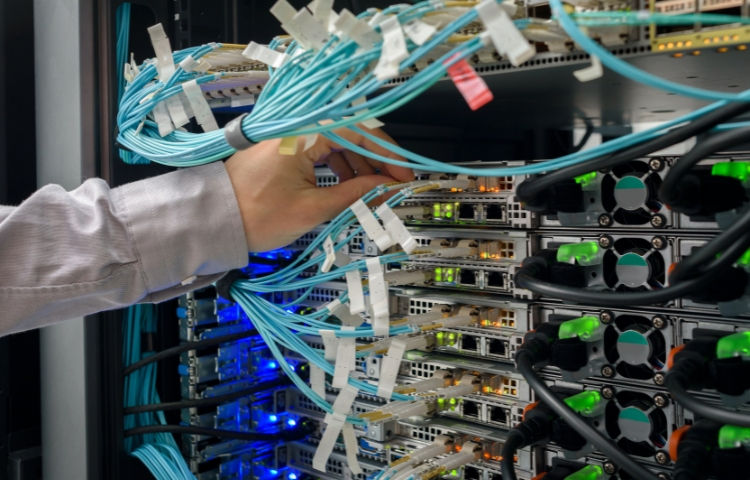Unveiling the Power of the Hardware Storage Market Evolution
- Jane Watson
- 2 days ago
- 4 min read
Quick Take: Why Hardware Storage Deserves Your Attention
Data is growing faster than ever—hardware storage is evolving to keep up.
From personal backups to enterprise-grade solutions, storage isn't just a utility—it's strategy.
Innovations like SSDs, hybrid arrays, and edge storage are rewriting what's possible.
Behind every great cloud or AI solution is a solid, powerful hardware storage backbone.

The Digital Backbone You Rarely Think About
In our hyper-connected lives, we often talk about the cloud, AI, streaming, or big data. But have you ever stopped to think where all that data lives? The answer: hardware storage. While the term might not sound flashy, the impact it has on nearly everything we do digitally is massive. It's not just about hard drives anymore. It's about how hardware evolves to keep up with our digital demands—from gaming consoles to cloud servers, from smart homes to space exploration.
This isn’t just a story about terabytes and transfer rates. It’s about a quiet revolution happening right beneath our fingertips—a transformation that’s powering industries, enabling innovation, and quietly shaping the world we live in.
A Word From the Experts: The Real Shift in Hardware Storage
According to Expert Market Research, the hardware storage market trends indicate a transformative shift—it's no longer just about capacity, but about intelligence, integration, and agility. Their analysts observe that the demand is rapidly evolving toward scalable, hybrid storage infrastructures that blend the performance of flash with the cost-efficiency of traditional systems. This shift is being driven by rising enterprise storage system needs, edge storage deployment, and the increasing complexity of data center storage hardware.
They highlight that businesses now treat hardware data storage solutions as critical enablers of innovation, rather than passive repositories for information. “The storage infrastructure of the future must be flexible, fast, and able to adapt to emerging technologies,” their latest research emphasizes. This insight marks a defining moment in how industries across the globe approach their storage technology adoption strategies and prioritize long-term investments in next-gen hardware storage systems.
From Backup Boxes to Intelligent Storage Powerhouses
Gone are the days when storage devices were bulky, noisy, and slow. Today’s hardware storage systems are intelligent, fast, and deeply integrated with AI and machine learning technologies. Think solid-state drives (SSDs) that boot up your system in seconds, or data centers that rely on complex storage networks to process petabytes of information every hour.
Storage isn’t just a place to “put” data anymore—it’s a critical piece of performance. In gaming, for example, faster storage reduces lag and loading times. In autonomous vehicles, real-time access to stored data is vital for decision-making. And in healthcare, securely storing and accessing patient data can literally be a matter of life or death.
Edge Computing and the New Era of Storage
What’s even more interesting is how storage is moving closer to the user. This is where edge computing comes in. Rather than relying solely on centralized cloud servers, devices now store and process data locally—on the “edge.” This cuts down on latency and ensures smoother, more efficient performance in real-time applications like surveillance systems, wearable tech, and smart cities.
The hardware that enables this edge revolution is highly specialized. It needs to be compact, durable, and fast, able to withstand temperature variations, vibration, and even low-power environments. This demand is pushing manufacturers to innovate storage devices that are not only powerful but also smart and self-monitoring.
The Green Side of Storage: Sustainability Matters
With all this data movement, there’s a growing focus on making hardware storage more sustainable. Traditional spinning hard disk drives consume more energy and have a shorter lifespan compared to SSDs. But beyond that, companies are exploring eco-friendly storage solutions with lower carbon footprints—modular designs that reduce electronic waste and smart energy-efficient architectures that power down when not in use.
Consumers and enterprises alike are now choosing hardware not just for performance but for impact. The push toward greener storage isn't a trend—it's becoming a standard.
Cloud Isn’t Everything: Why On-Prem Storage Still Wins
It’s tempting to think everything’s moving to the cloud, and while that’s partly true, on-premises storage hardware isn’t going anywhere. In sectors like defense, banking, and pharmaceuticals—where security, compliance, and speed are non-negotiable—local storage systems provide full control and zero-latency performance.
Hybrid environments are becoming the norm: a blend of cloud and physical storage that lets companies keep sensitive data close while taking advantage of cloud scalability for less critical operations. And the hardware in these setups? It’s smarter, faster, and more compact than ever before.
What’s Next: AI-Powered Storage Systems
As we move deeper into an AI-first world, storage systems themselves are becoming autonomous. AI-powered storage can self-optimize, detect failures before they happen, and even predict capacity needs based on usage trends. These systems are turning storage into something proactive rather than reactive.
Imagine a data center where the storage system learns patterns and automatically redistributes resources to prevent bottlenecks. Or a home NAS that secures your personal data by identifying suspicious file behavior in real time. This isn’t science fiction—it’s already here, and it’s reshaping how we think about data management.









コメント